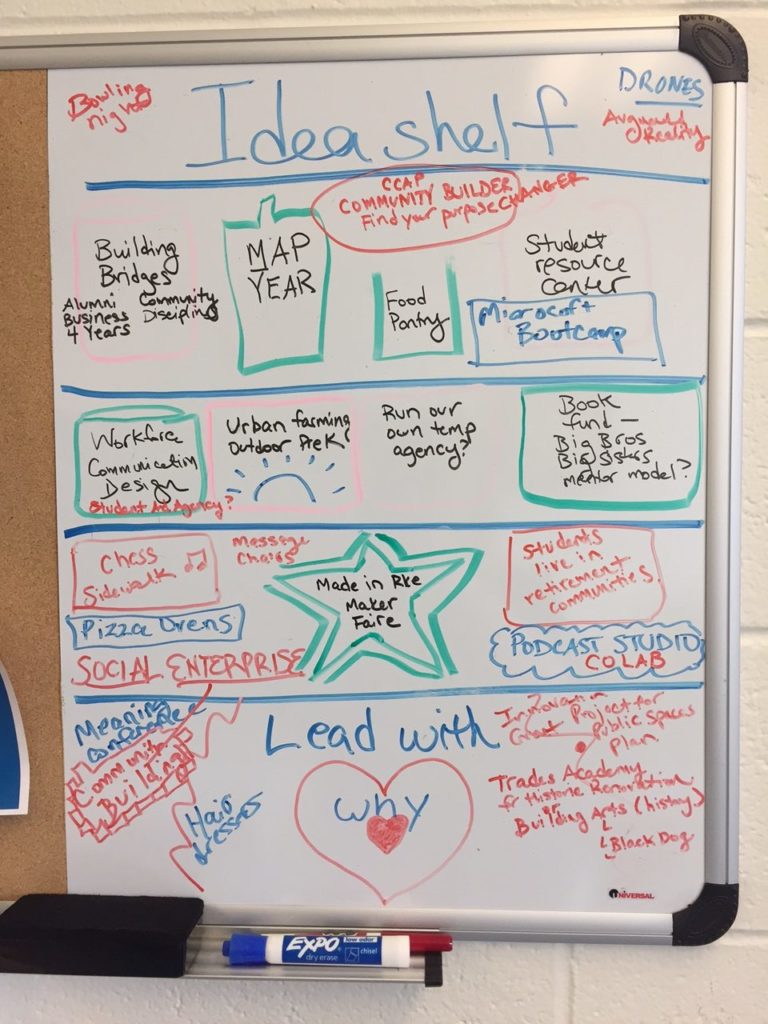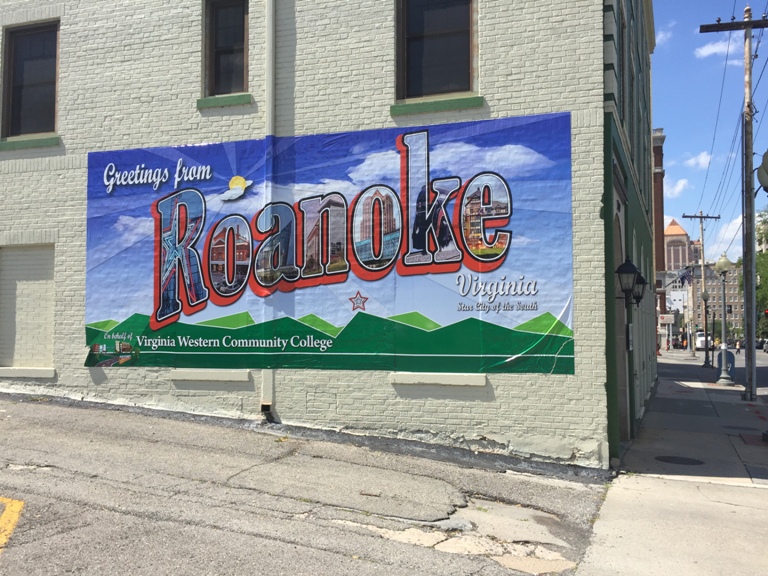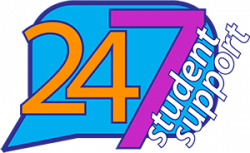
So I’ve probably mentioned that I have an “Idea Shelf” in my office.
This is a whiteboard where I collect all kinds of random ideas as they might relate to this community college, ranging from outdoor preschools to a trades academy for historic renovation to a “Made in Roanoke” fair.
I love ideas. I *live* for cool ideas.
But ideas aren’t the only important ingredients when it comes to innovation.
Earlier in June, I had the privilege of attending a Data-Driven Innovation Boot Camp at RAMP, the new business accelerator in downtown Roanoke (which features a nifty mural designed by our own Joe Collins).

There was a lot to cover in two days’ worth of presentations by Mike Abbott and Lisa Garcia, who both teach NSF Innovation Corps programming to Virginia Tech students (among other impressive international gigs). They were in Roanoke to help coach the latest batch of RAMP entrepreneurs, a cohort of eight companies specializing in STEM-H fields.
So the focus of the training was on these startup companies and explaining a lot of business jargon (minimum viable product?), but my biggest takeaway — especially as it relates to my grant work at Virginia Western — was:
Focus on NEEDS first, solutions second.
This seems like common sense, but apparently it’s a huge problem for fledgling businesses. According to the Mike and Lisa, the most common reason for startup failure is the that they create cool products or services … but no one wants to buy them. They can’t find customers, or they didn’t understand their potential customers in the first place.
So I’ll share the four key questions that startups … or anyone with an entrepreneurial mindset … should focus on, according to the RAMP training:
- Are you going after a top-of-mind need?
- Who is the person you are seeking to serve?
- What is the person seeking to do better? (Or, what do they struggle with?)
- How do they define better? (To establish metrics of success)
So how do we find the real needs? Google searches for data and general chair-based research is a start, but we have to actually talk to people, according to Mike and Lisa. This summer, each of these startups is expected to interview 100 potential customers — preferably face-to-face interviews to get the most honest feedback, with phone calls as the last resort. No emailed questions are allowed. It was also understood that these should be strategically targeted customers … not just the first 100 people they meet at the mall or 100 of their friends. This will be hard work, to be sure, but it’s essential to understanding the real needs they want to serve.
So if you ever work with me on a future grant project, you will understand why I will be obsessed with needs. I will be asking lots of questions about workflows and processes, digging more deeply into the problems we’re trying to solve. Experience has taught me that sometimes the problem we thought we were trying to solve wasn’t the real problem at all.
Which brings me to a quote I jotted down during the training: “Innovation is like solving a mystery.”
I will continue to collect creative ideas for my “Idea Shelf” — not because I intend to write grants for any or all of them — but to have a bunch of possibilities ready while we figure out the most important needs. Bring on the mysteries.






 Shelley Lyons is glad to be back on campus as she is a Virginia Western alum, and has served as the Administrative Officer for Grants Administration at Virginia Western since early 2022. Prior to VWCC, her career focus was within the Human Services and Arts fields. She wrote her first grant in 1996 on a whim and has continued to plan and learn since that time. She most enjoys seeing a well-planned project come to fruition, where funder, project manager and beneficiaries can all feel success and see impact.
Shelley Lyons is glad to be back on campus as she is a Virginia Western alum, and has served as the Administrative Officer for Grants Administration at Virginia Western since early 2022. Prior to VWCC, her career focus was within the Human Services and Arts fields. She wrote her first grant in 1996 on a whim and has continued to plan and learn since that time. She most enjoys seeing a well-planned project come to fruition, where funder, project manager and beneficiaries can all feel success and see impact.